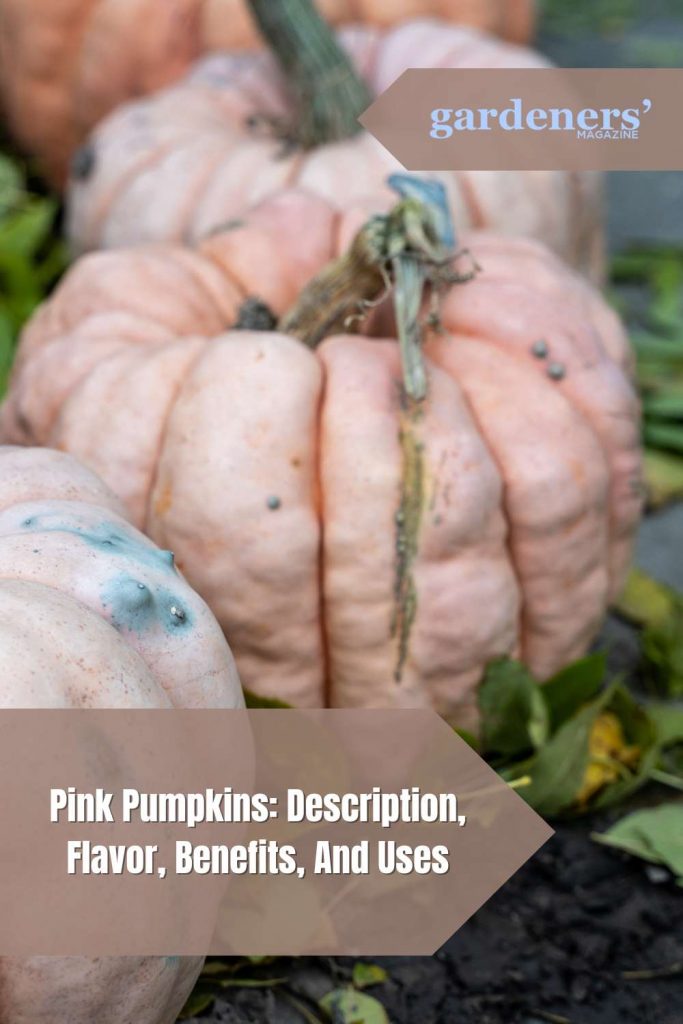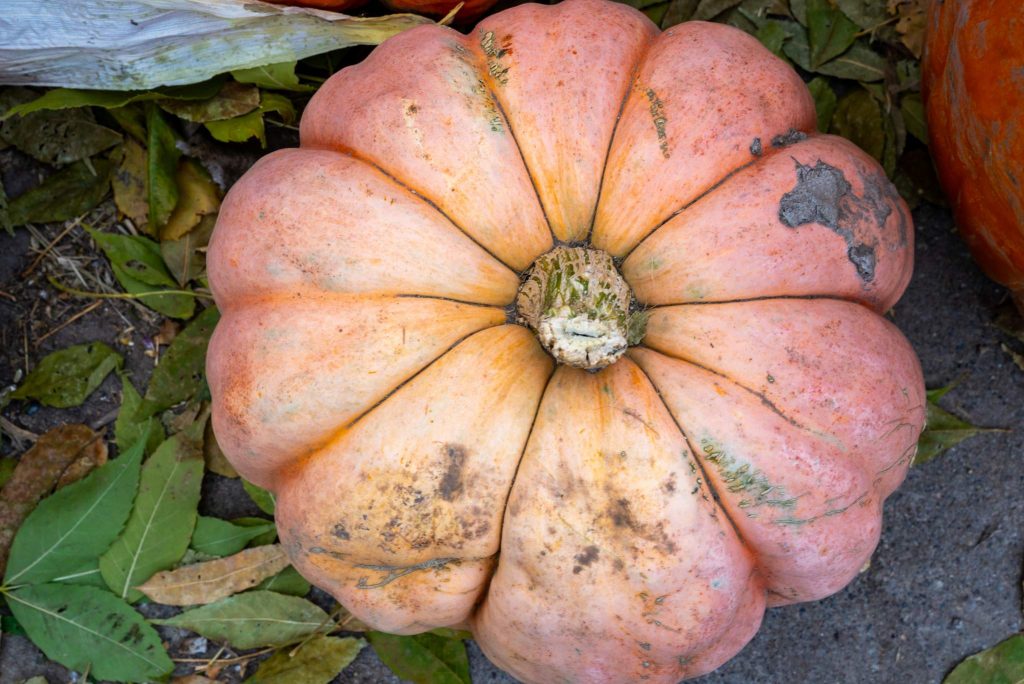Pink pumpkins have been gaining much attention recently and for a good reason. This delightful variety of pumpkins is beautiful in color and more nutritious than traditional orange pumpkins. What’s so special about pink pumpkins, and why are they becoming increasingly popular? In this article, we will explore the fascinating world of pink pumpkins!
What are Pink Pumpkins?
Pink pumpkins, or Cotton Candy Pumpkins, are squash characterized by their vibrant pink hue. Unlike traditional orange pumpkins, pink pumpkins have much smoother skin and are smaller. They are sometimes mistaken for watermelons because of their striking color. They are a popular choice for fall decorations and can often be carved into jack-o’-lanterns or painted with unique designs. Pink pumpkins offer several health benefits due to their high concentration of carotenoids and Vitamin A.

What Makes Pink Pumpkins so Special?
One of the most noticeable things about pink pumpkins is their vibrant color. This color is produced by a rare pigment called lycopene, which gives the pumpkin its unique hue. But beyond just looking pretty, pink pumpkins are more nutritious than their traditional orange counterparts.
For starters, they contain more fiber and vitamin C per serving than traditional orange pumpkins, making them a great source of essential nutrients. They are also higher in antioxidants and beta-carotene, which can help reduce inflammation and the risk of certain diseases.
History and Origin of Pink Pumpkins:
Pink pumpkins, or Cotton Candy Pumpkins, are a relatively new variety. They were developed in the late 1990s by horticulturalists at the University of New Hampshire and have since become popular. The pink pumpkins have an orange-pink color that is often compared to cotton candy, giving them their nickname. They are medium-sized and have a smooth, round shape.
When they were first introduced, pink pumpkins had a relatively short harvest season; however, this has been extended in recent years due to advances in seed technology. As such, they are now available for much longer periods throughout the year. Pink pumpkins can be used like traditional orange pumpkins, such as for carving jack-o’-lanterns, cooking, and even decorating homes.
Description of the Pink Pumpkins:
Pink pumpkins have an average size range of 10 to 15 centimeters in diameter and up to 25 centimeters in length. The flesh of pink pumpkins is pale pink, with a sweet yet slightly acidic flavor. Pink pumpkins are generally round or oblong shaped with dark greenish-gray skin mottled with bright white speckles.
Pink pumpkin vines are characterized by their dark purple stems and green leaves. They are a hardy variety of pumpkins and can tolerate hot and cold climates. Pink pumpkins are often used in soups, stews, pies, muffins, bread, smoothies, cakes, pancakes, and other sweet dishes.
Flavor Profile of Pink Pumpkins:
Pink pumpkins have a much milder flavor than traditional pumpkins — perfect for pumpkin purees and pies. Pink pumpkins are a great addition to any seasonal dish with other such as apples, pears, and squash. They can be cooked in a variety of ways such as sautéed, roasted, boiled, steamed or even mashed with other vegetables like potatoes. Their vibrant pink color is sure to add an eye-catching touch to any meal.Pink pumpkins are a great addition to salads too – the crunchy texture makes them a perfect topping for a variety of dishes. Lastly, they can be used to make delicious jams and jellies with their naturally sweet flavor.
Health Benefits of Pink Pumpkins:
Pink pumpkins are rich in vitamin A and beta carotene, which help keep eyes healthy and promote good vision. They’re also an excellent source of vitamins C and E, potassium, magnesium, copper, and fiber. Pink pumpkins can help lower cholesterol levels and reduce the risk of cancer, heart disease, and other chronic diseases.
Pink pumpkins are also low in calories (only 50 per cup), making them a great snack for weight loss or maintenance. Furthermore, these pumpkin varieties are high in antioxidants that can help protect cells from damaging free radicals. So if you want to add color, flavor, and nutrition to your diet this season, give pink pumpkins a try.

Cultivation of the Pink Pumpkins:
Pink pumpkins can be successfully grown in containers and in the garden. For container cultivation, use at least a 20- to 30-gallon pot filled with quality soil and well-draining material such as compost or aged manure. The pH of the soil should be 6.5 to 7.0 for best results. When planting pink pumpkins directly in the garden, prepare a well-drained spot with plenty of organic material incorporated into the soil.
Pink pumpkins require full sun and at least 6 to 8 hours of direct sunlight daily. Water when the top few inches of soil are dry, but be careful not to overwater. Fertilize regularly using a balanced fertilizer such as 10-10-10. Mulch around the plants to keep weeds at bay and help retain moisture in the soil.
Harvesting of the Pink Pumpkins:
Pink pumpkins are harvested when they reach the desired size. The size of the pumpkin should be between 8-10 inches in diameter and 5-7 pounds in weight. Once the ideal size is reached, it’s time to harvest them.
Harvesting pink pumpkins can be tricky because they have a softer exterior than regular orange ones. Use a sharp knife to safely cut the pumpkin from the stem to harvest pink pumpkins. Be sure to leave at least an inch or two of the stem attached to keep them fresh and prevent rot. Once harvested, store the pumpkins in a cool, dark place until ready to use them. Enjoy your delicious Pink Pumpkins.
Where Do Pink Pumpkins Grow?
Pink pumpkins grow in North America and Europe. They are grown mainly in the Midwest and Northeast regions in the United States. The Pink Pumpkins are also found in parts of Canada and Mexico. These pumpkins are mainly cultivated in Germany, France, Netherlands, Belgium, and other European countries.
Some other countries where they can be found include Australia, New Zealand, and Japan. Pink pumpkins can also be cultivated in some areas of Asia and South America with the right climate and soil conditions.
Where can the Best Quality Pink Pumpkins be brought?
The best quality Pink Pumpkins can be found at gourmet grocers, farmers’ markets, and specialty produce stores. Look for ones that are fresh, firm, and brightly colored. You may also find them online from some specialty retailers. Be sure to read reviews before making a purchase, as the quality of the pumpkins varies greatly from store to store.
Additionally, many local nurseries and garden centers can provide Pink Pumpkins. Be sure to ask around and see what options are available in your area. With some research, you can find the perfect pumpkin for your needs.
What are the things you need to keep in mind when buying Pink Pumpkins?
- Variety: Choose a variety of pink pumpkins suitable for your needs and preferences. Some varieties produce larger fruits than others, so be sure to choose the one that will produce the size pumpkin you want.
- Quality: Look for well-formed pumpkins with firm skin and no bruises or soft spots. Avoid pumpkins that have any signs of decay or damage.
- Harvest Time: If you are buying fresh pumpkins, buy them in the late summer and early fall when they have been recently harvested and are at their peak sweetness and flavor.
- Price: Pink pumpkins can range in price from very expensive to relatively inexpensive, depending on the variety and size of the pumpkin. Shop for the best deal and compare prices between different retailers before purchasing.
What is the Best Way to Store Pink Pumpkins?
The best way to store Pink Pumpkins is to keep them in a cool, dry, dark place such as a pantry or basement. It’s important to keep the area consistent in temperature and humidity and ensure it’s not exposed to direct sunlight or moisture. Also, ensure enough air circulation around the pumpkins so they don’t get too hot or cold.
It’s best to store the pumpkins on a shelf that can be raised off the ground so they don’t get wet if there is a leak. Lastly, check on your pumpkins regularly to ensure they’re in good condition, and discard any with soft spots or mold. Following these tips, you can ensure that your Pink Pumpkins are stored properly and stay fresh for many months.
How to use Pink Pumpkins in Recipes with others?
Pink pumpkins also pair beautifully with other fruits and vegetables like apples, pears, carrots, onions, garlic and potatoes. They can be combined into sweet purees or savory soups and stews. For a fun and flavorful side dish, try roasting cubes of pink pumpkin with other vegetables like carrots and sweet potatoes. You can also make fritters out of grated pink pumpkins combined with apples and spices such as cinnamon and nutmeg.
For a delicious dessert, combine cubed pink pumpkins with apples, raisins or cranberries in a spiced pastry crust and top with your favorite crumble topping. Another fun idea is to make pink pumpkin pancakes by adding cubed pumpkin into the batter. To add a hint of sweetness, drizzle them with honey or maple syrup.
With just a little imagination, you can turn pink pumpkins into delicious dishes that are sure to please everyone. The sweet flavor makes them a great addition to both sweet and savory dishes, so don’t be afraid to experiment! Just remember to adjust the baking times according to the size of your pumpkin cubes. Have fun in the kitchen with pink pumpkins!
Conclusion:
Pink Pumpkins are a delicious and versatile gourd that can be used in various recipes. When selecting and storing Pink Pumpkins, choosing firm pumpkins with no soft spots or mold is important. It’s also best to keep them in a cool, dry, dark place with enough air circulation to avoid getting too hot or cold. When cooking with Pink Pumpkins, it is important to consider the other ingredients and adjust the cooking time accordingly. By following these tips, you can ensure your pumpkins stay fresh and delicious for as long as possible.
- Everything You Wanted to Know About Red Tamarillos - June 2, 2025
- A Guide to Tulips: Everything You Need to Know & More… - June 2, 2025
- Guanabana: Description, Flavor, Benefits, And Uses - May 27, 2025

3 thoughts on “Pink Pumpkins: Description, Flavor, Benefits, And Uses”
Comments are closed.